Likes
- Class-leading build quality
- Reliability is superior to anything from Europe
- Loaded with standard equipment

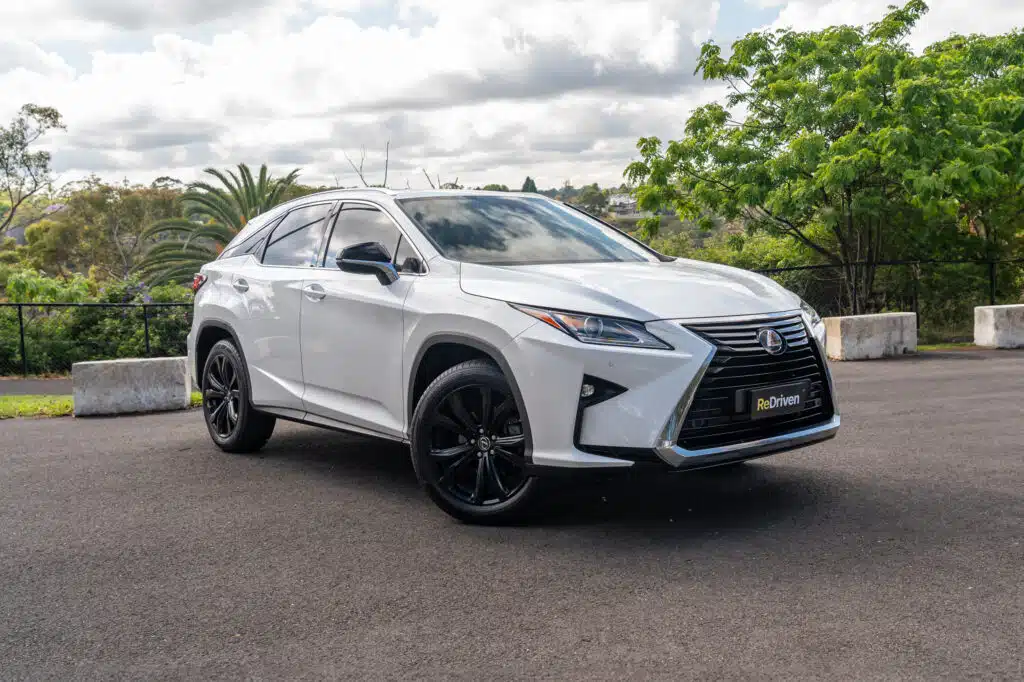
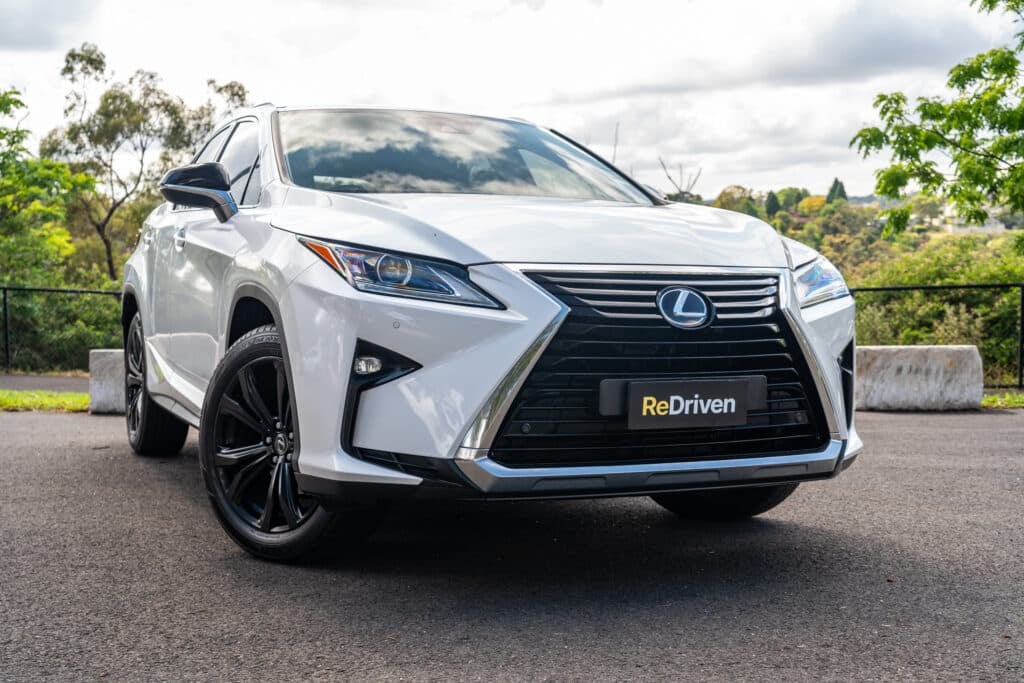
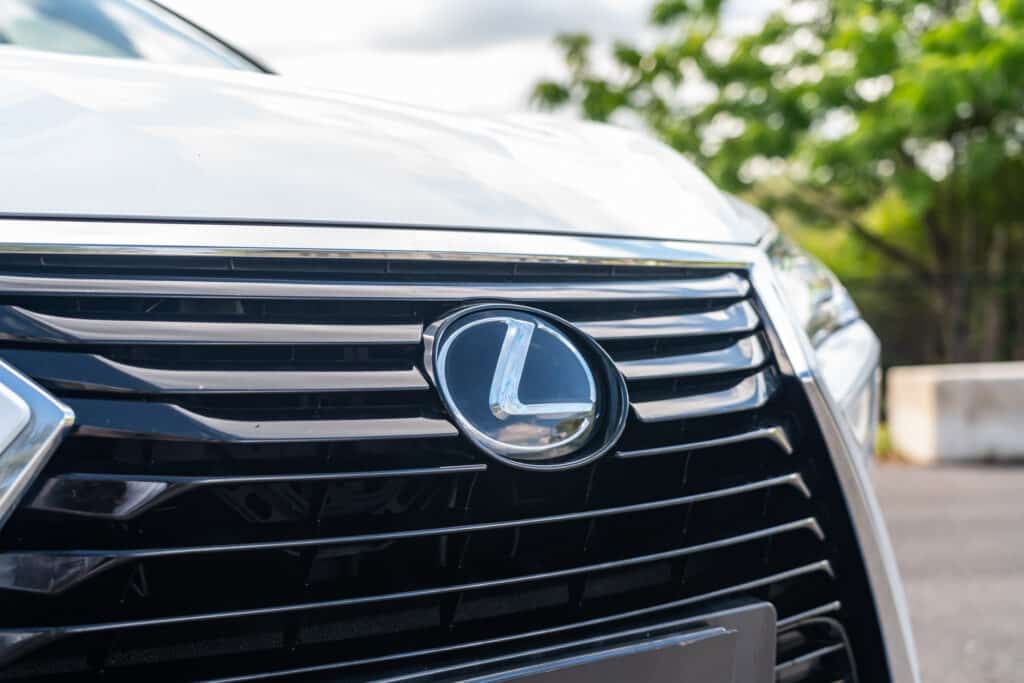
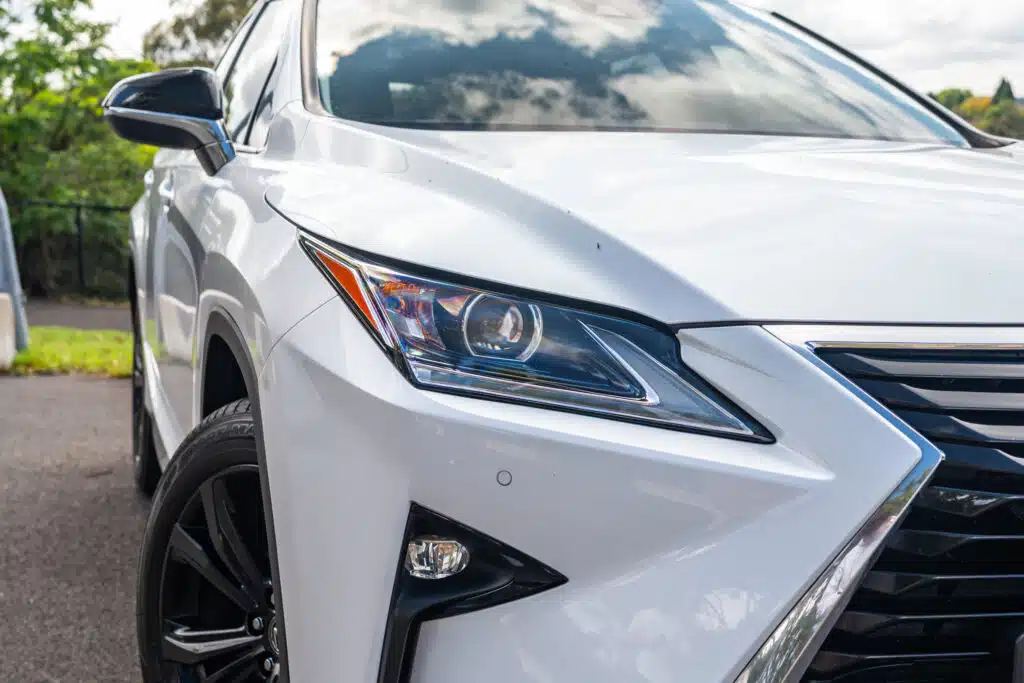

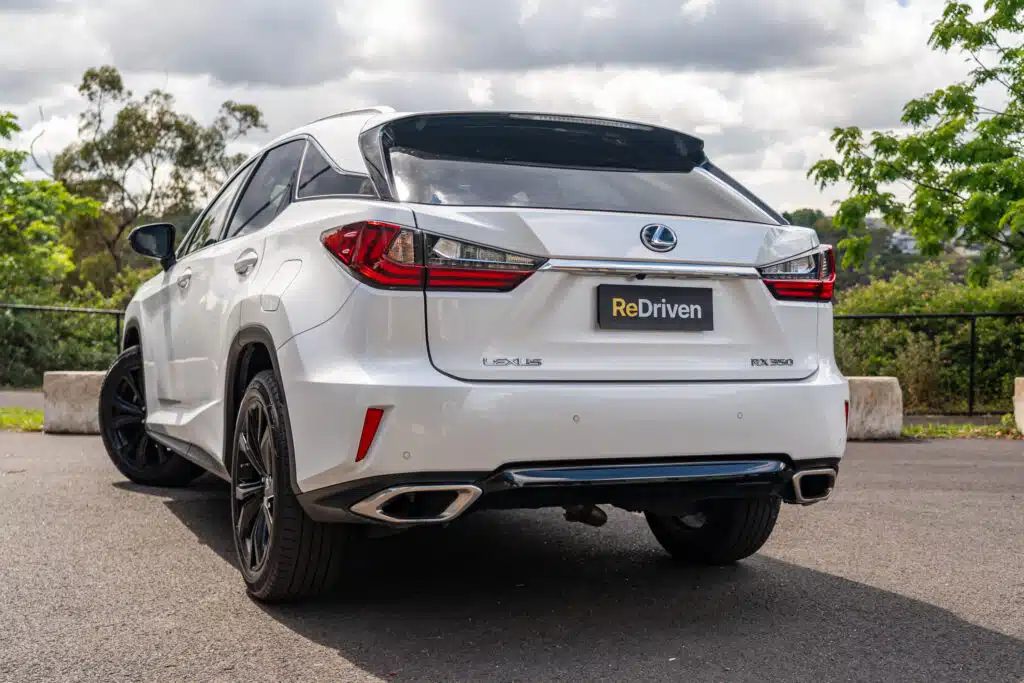
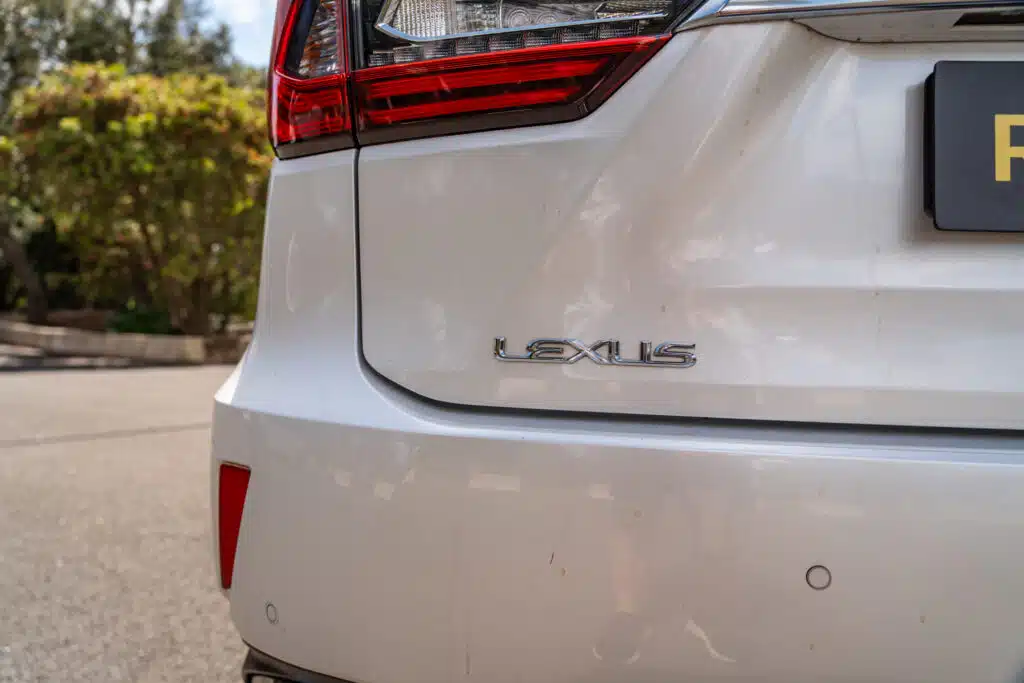
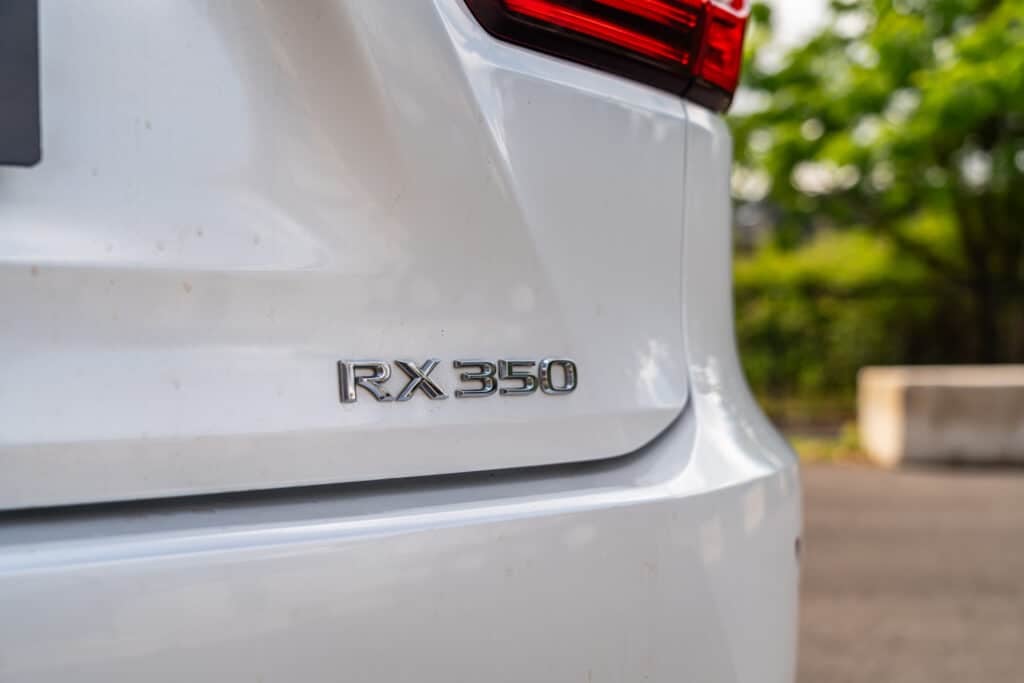




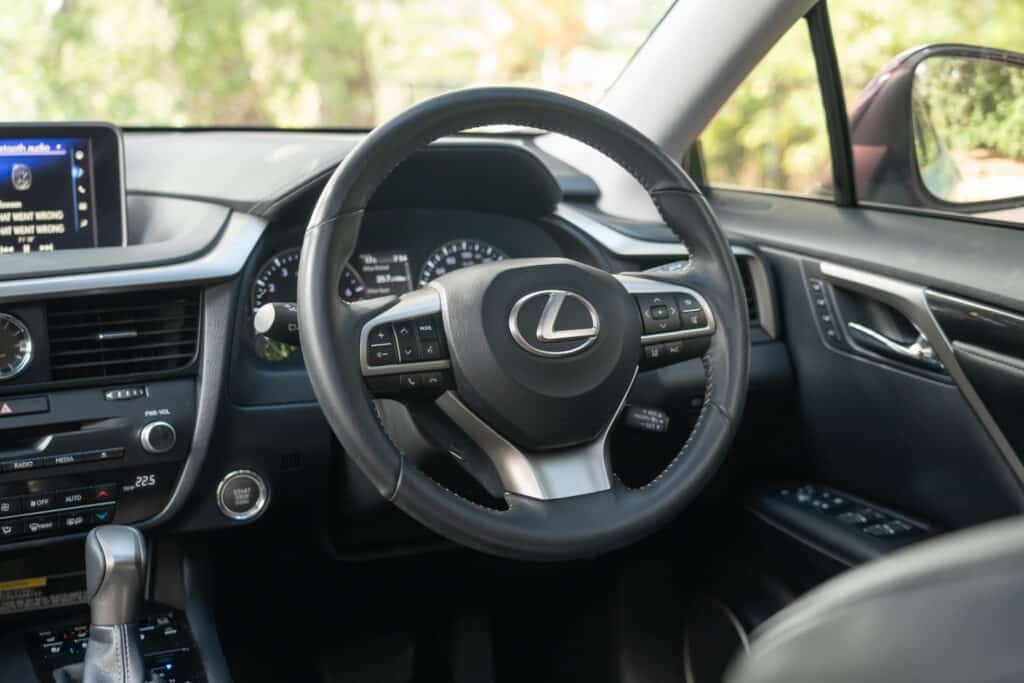
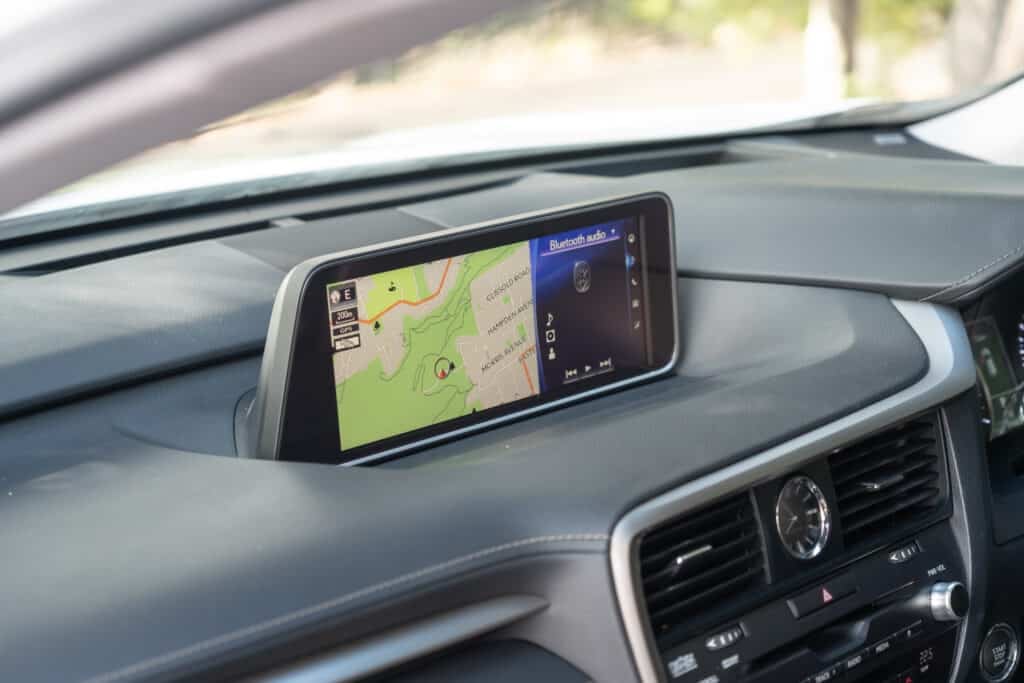
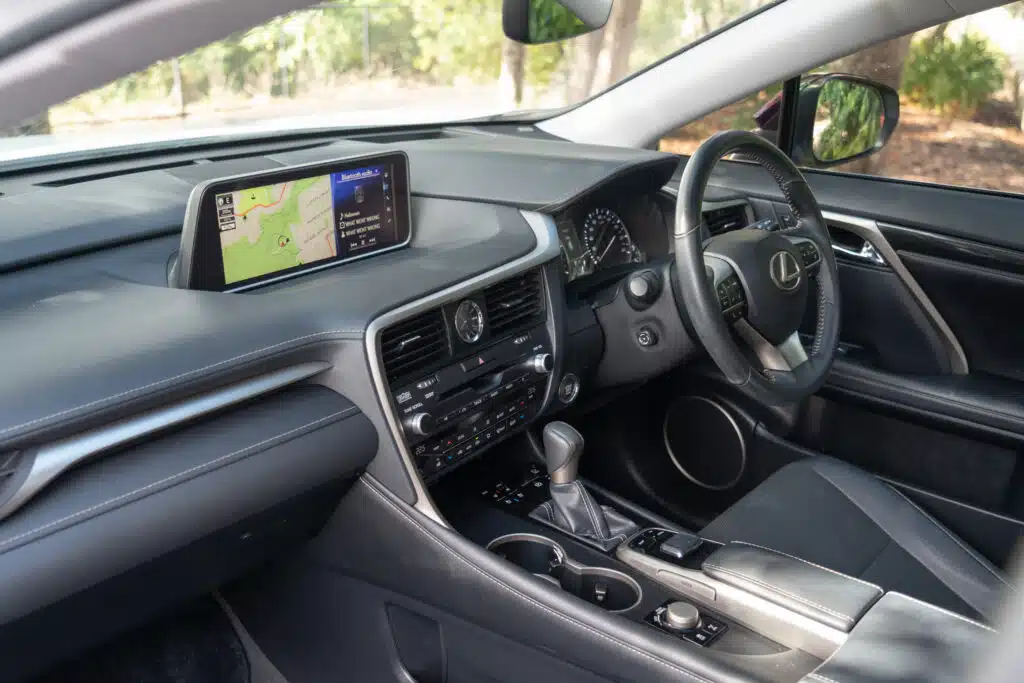
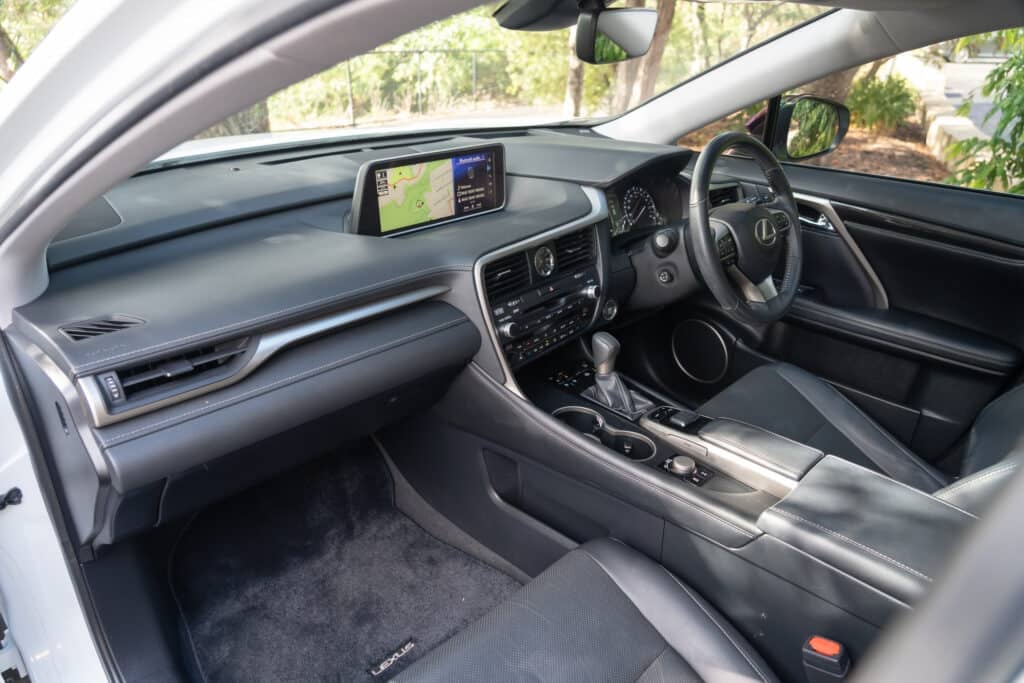
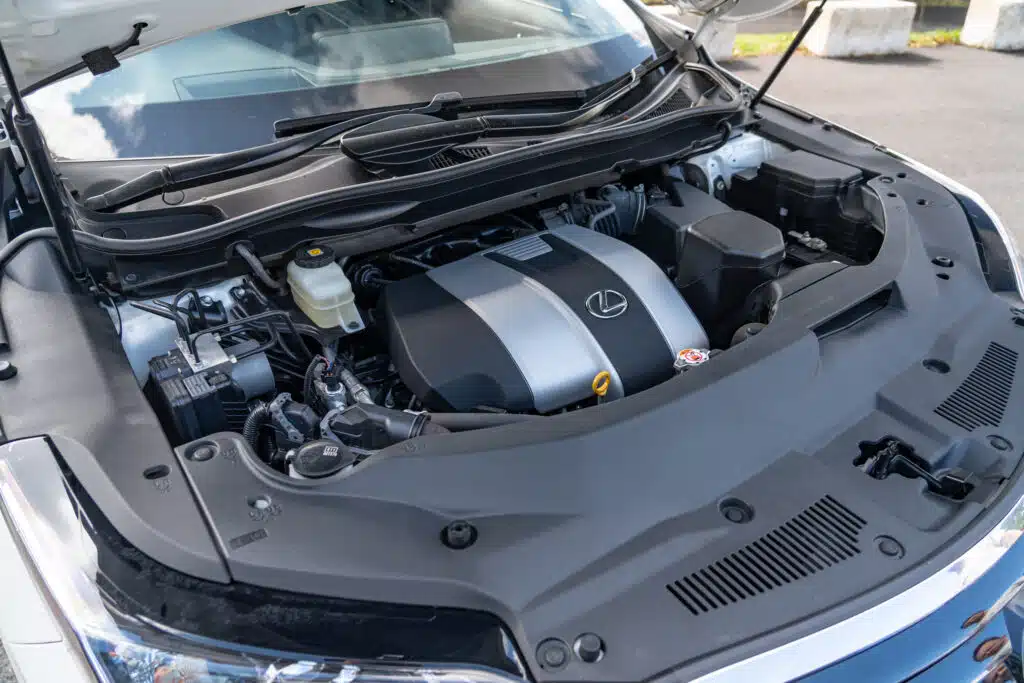
The AL20-generation Lexus RX – the fourth generation of Lexus’s well-known luxury SUV that first debuted in the late 90s. It shares a platform with the Toyota Kluger (aka. Highlander), but as a product of Toyota’s luxury division, it elevates the quality of everything to more upmarket standards – from the type of cabin materials, the drivetrain, and the driver and passenger experience.
Rivalling the likes of European luxury SUVs like the BMW X5 and Audi Q5, this iteration of the Lexus RX continued to prove itself as an excellent example of Lexus’s classic attention to detail that allowed it to excel in reliability and overall refinement compared to other models in the segment.
For Australia, this iteration of the RX first arrived in 2015, with a facelift introduced for models after 2019 up until its final year in 2022. Not only did the facelift update the styling, it also brought more features like Lexus Safety System+ 2.0, more trims, and notably, updated the infotainment screen size.
Also, a slightly longer ‘RXL’ model was introduced from 2017 onwards that added a third row and seating for seven in total (compared to the standard RX’s seating for five), but truth be told – this third row was very tiny, even for the thinnest/shortest of occupants, so many owners ended up not using this at all.
The Australian market got the choice between either a 2.0L turbocharged four-cylinder (RX200t/300) or a naturally-aspirated 3.5L V6 (RX350), as well as a Lexus staple – a V6 hybrid (RX450h) powertrain. Power could be sent to the front or all-four wheels through a six or eight-speed automatic, aside from the hybrid that came with an eCVT (Continuous Variable Transmission).
But how does this iteration of the Lexus RX fare as a secondhand purchase, and should you consider buying one?
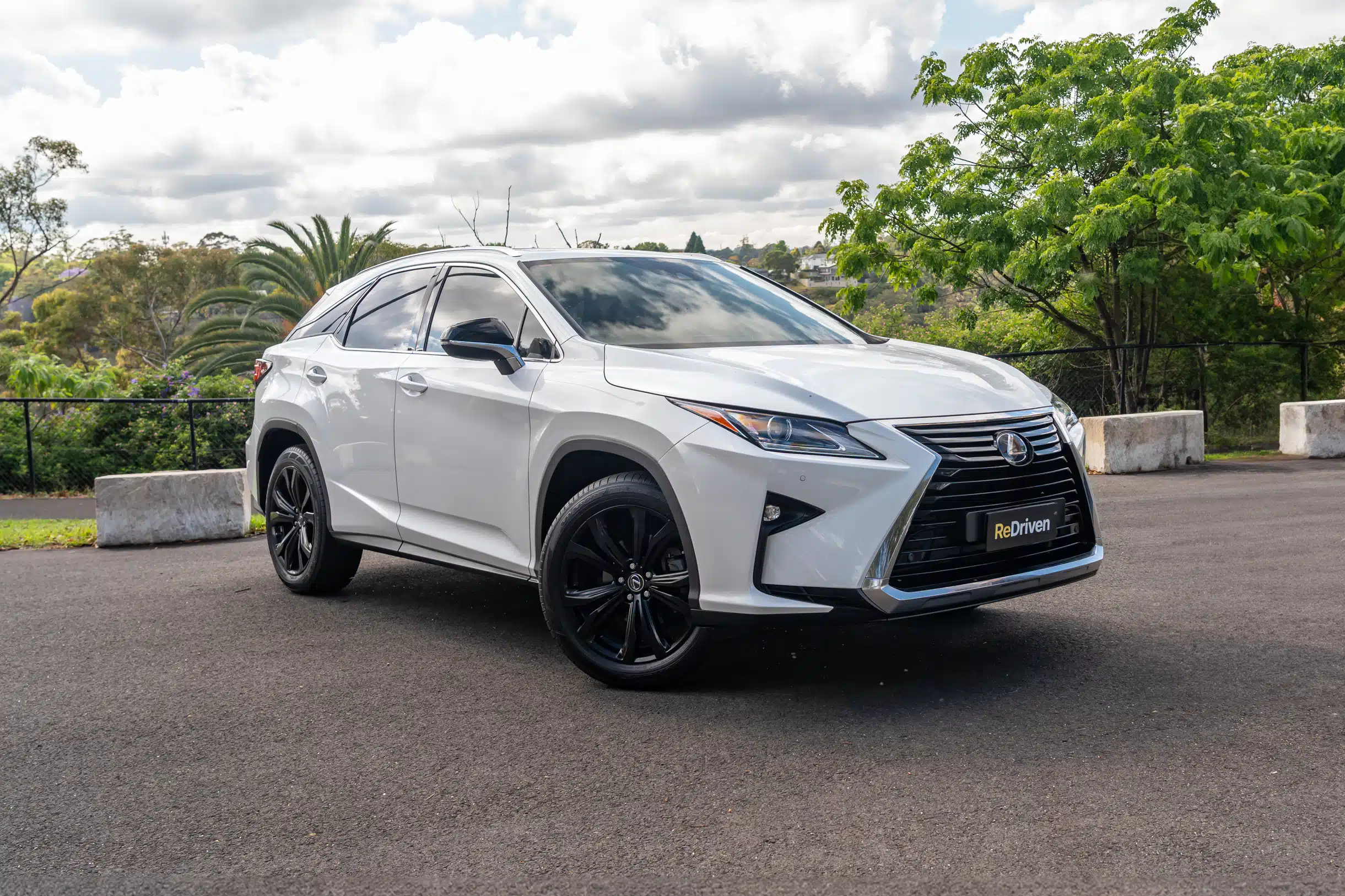


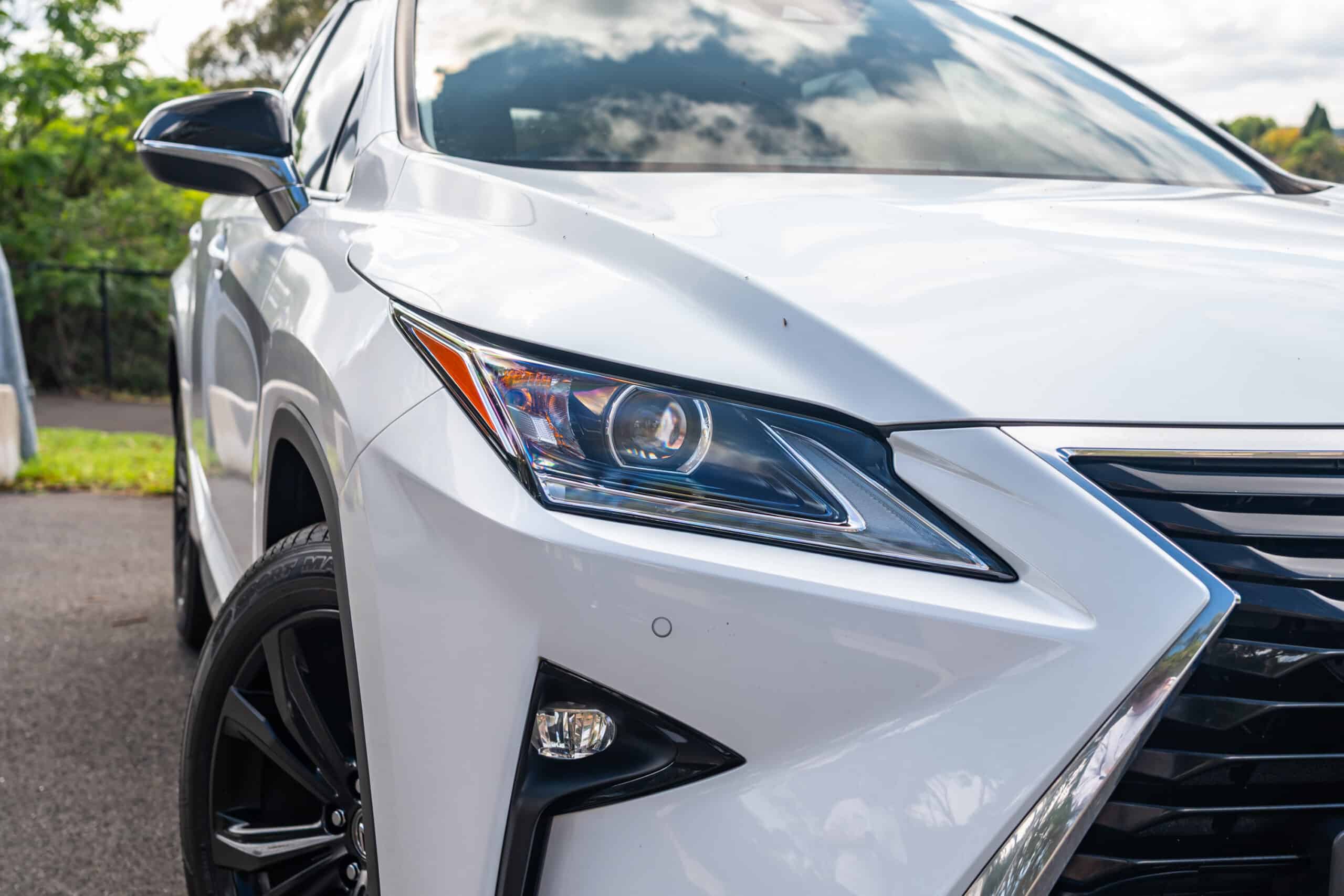
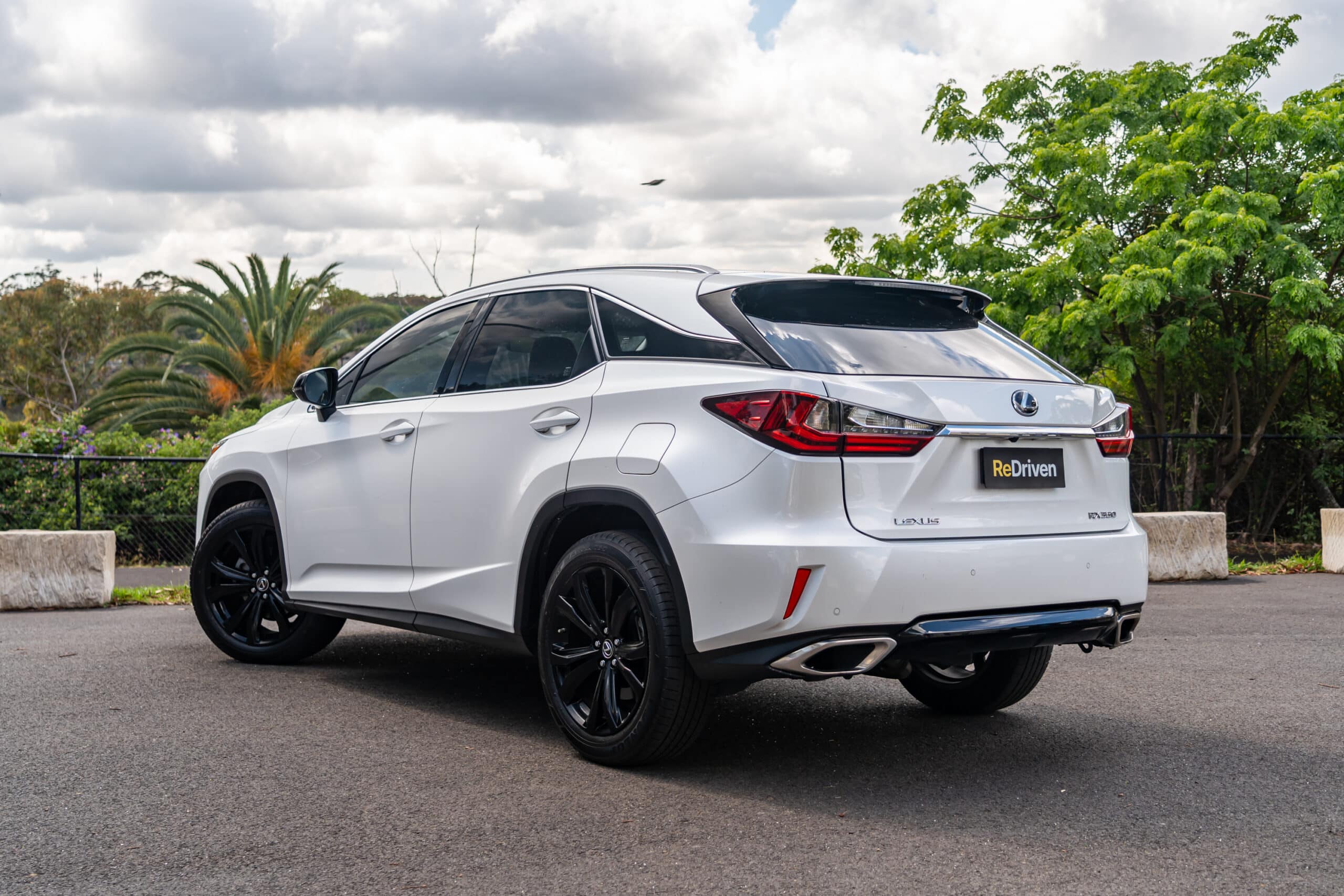
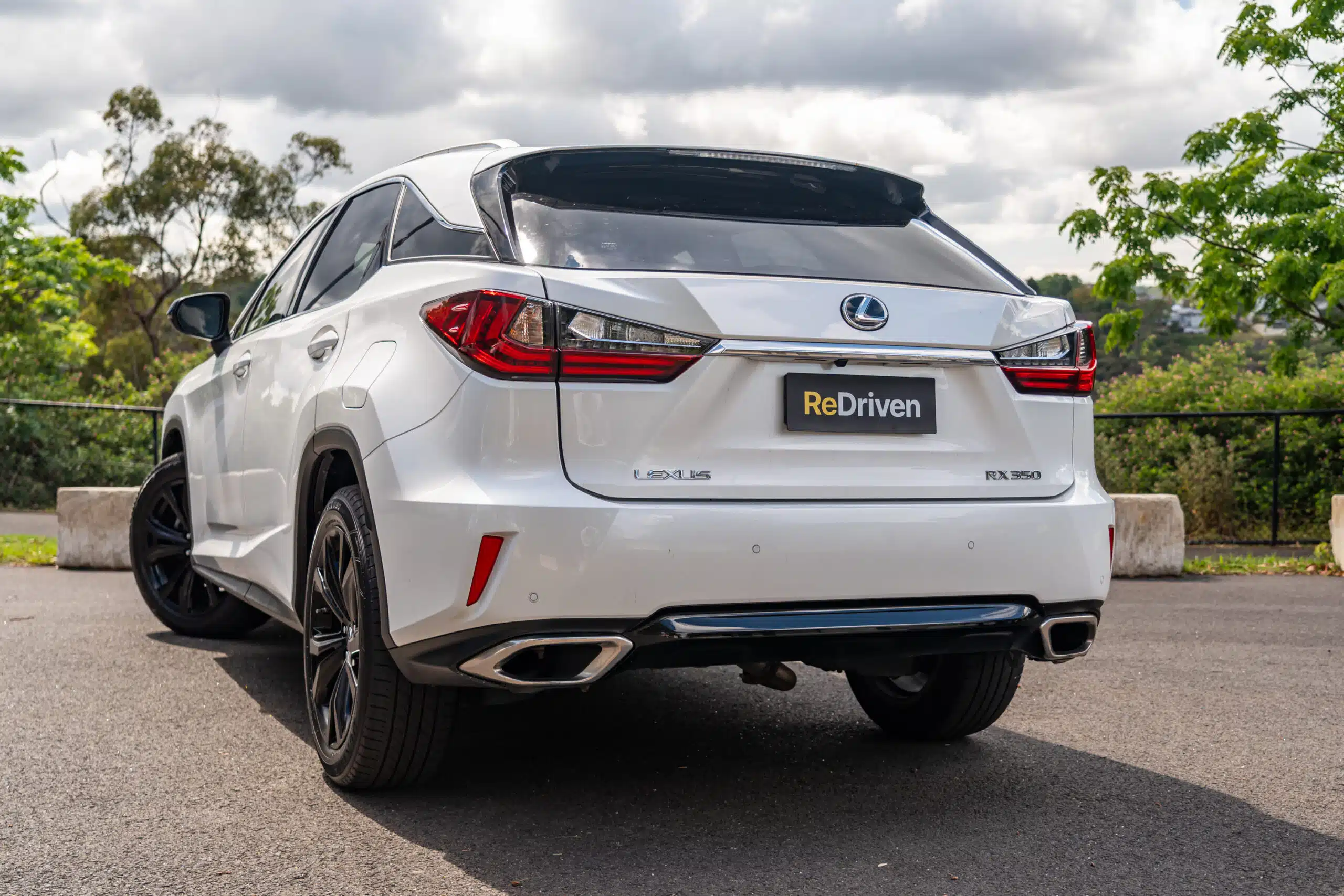
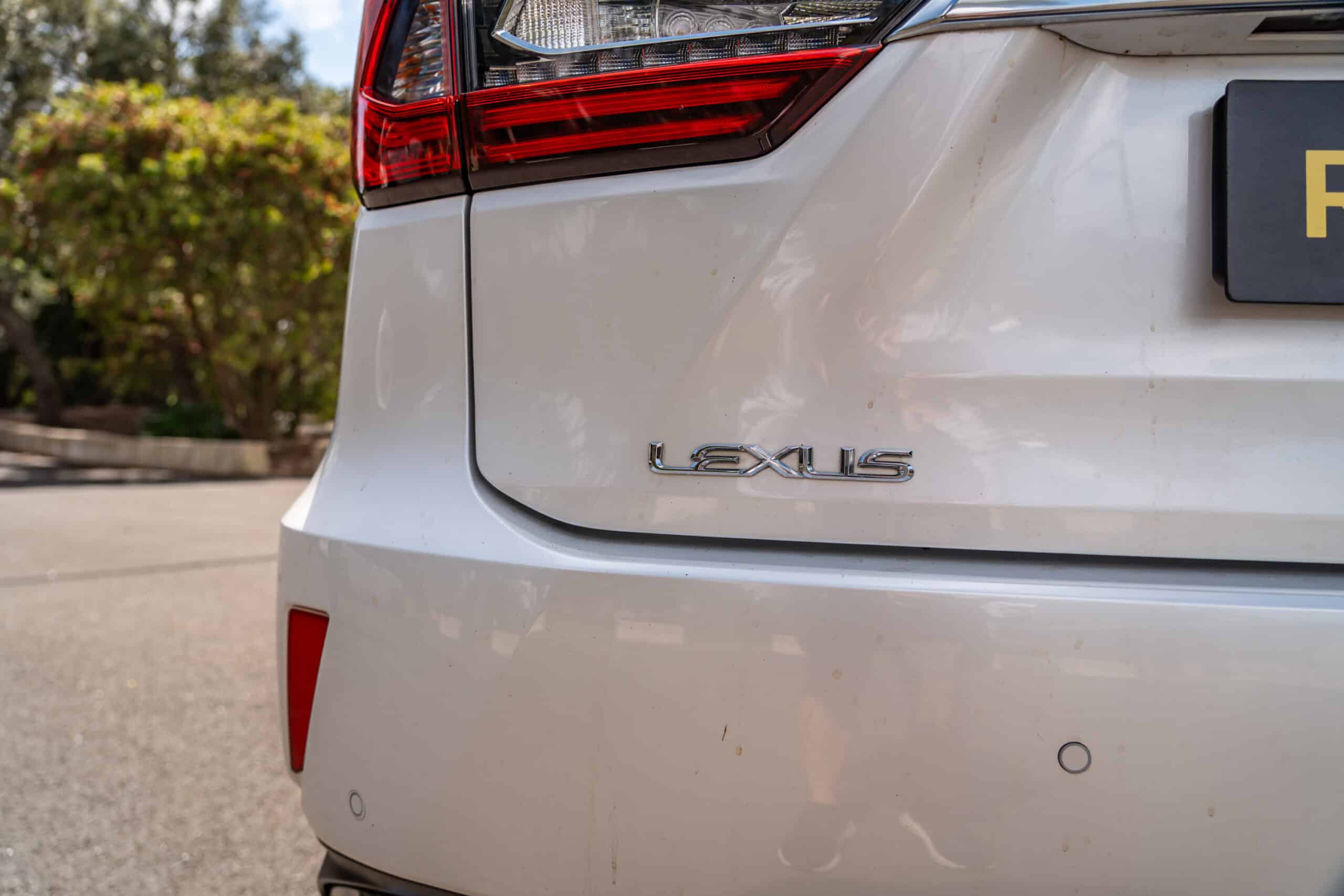

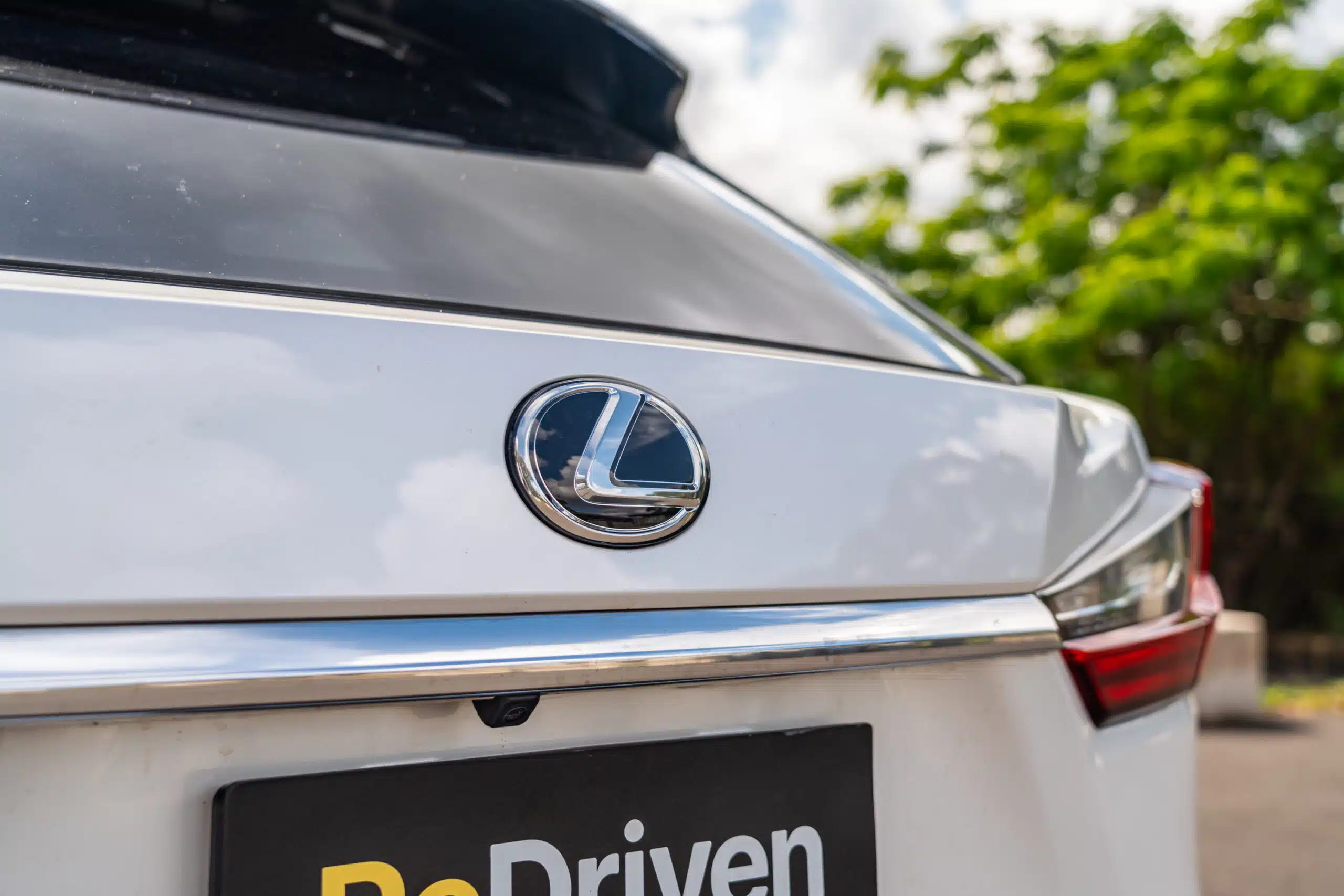
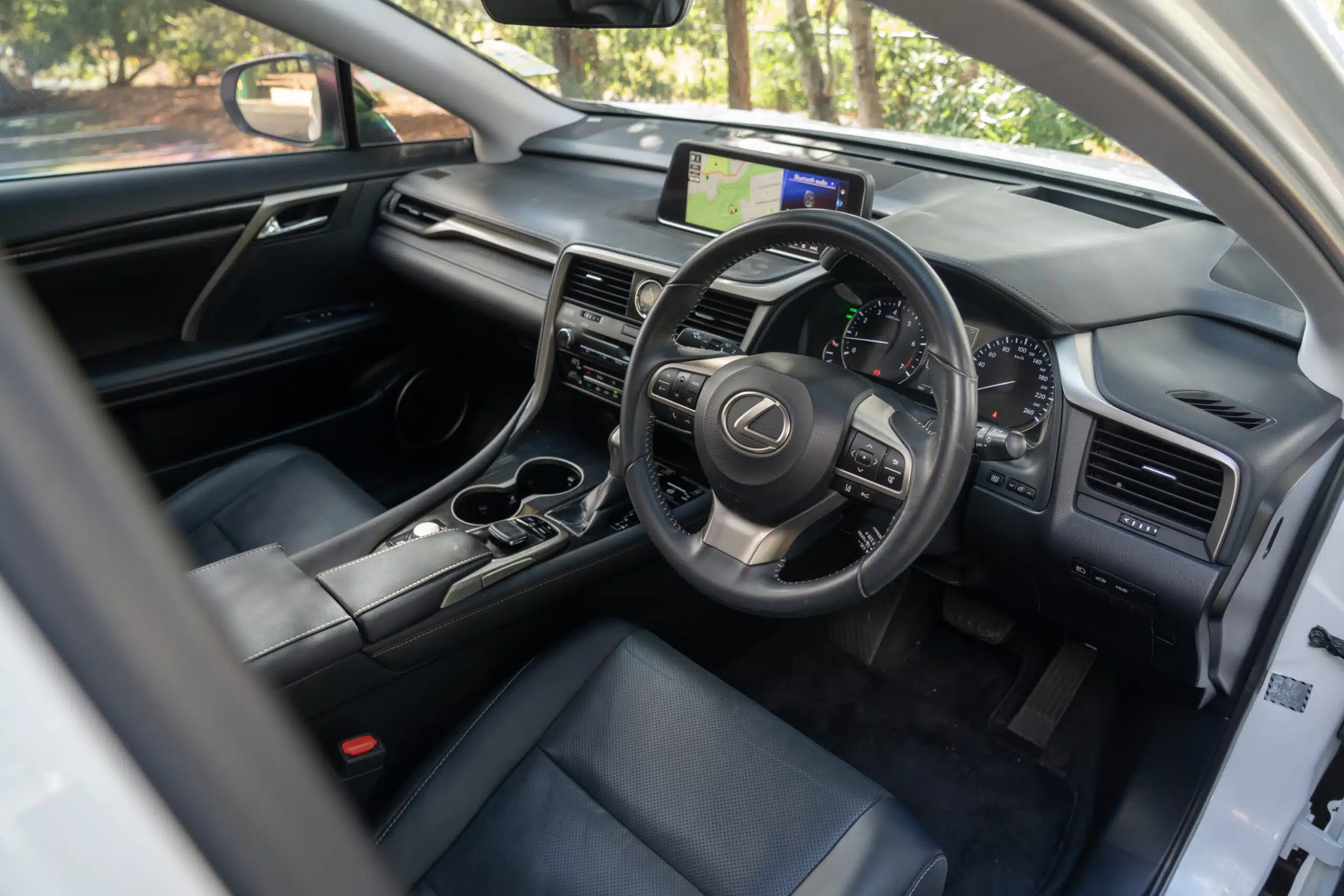
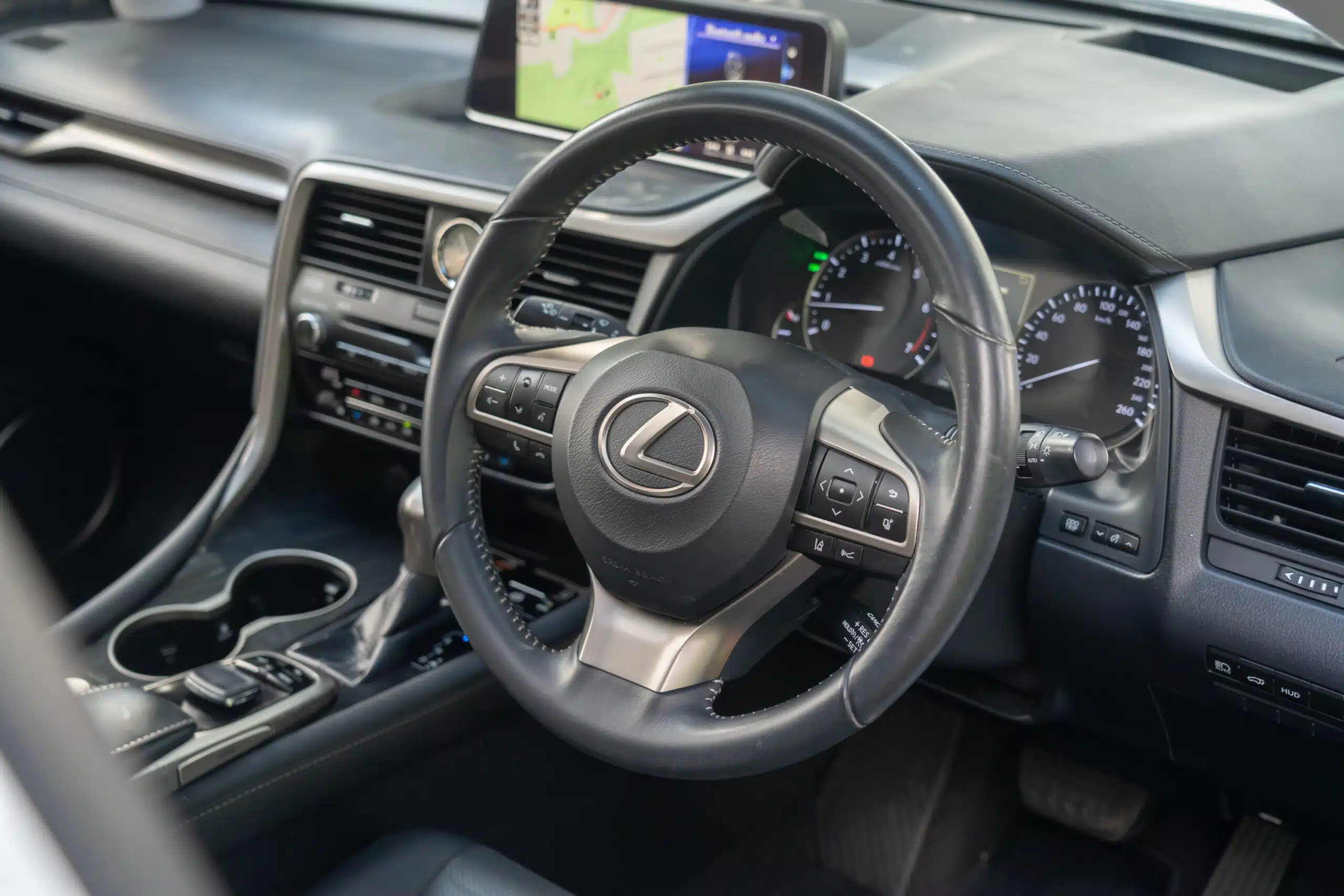

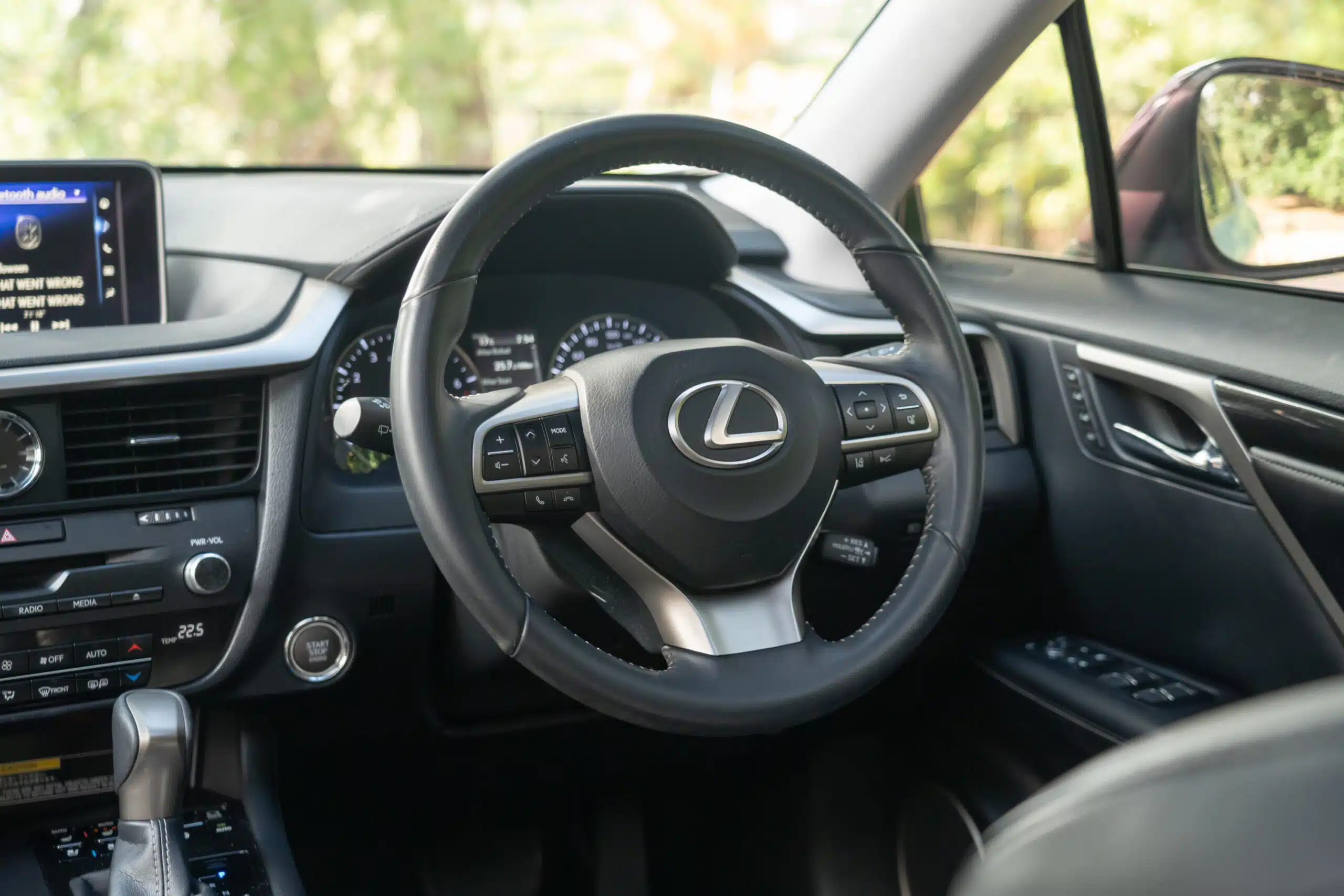
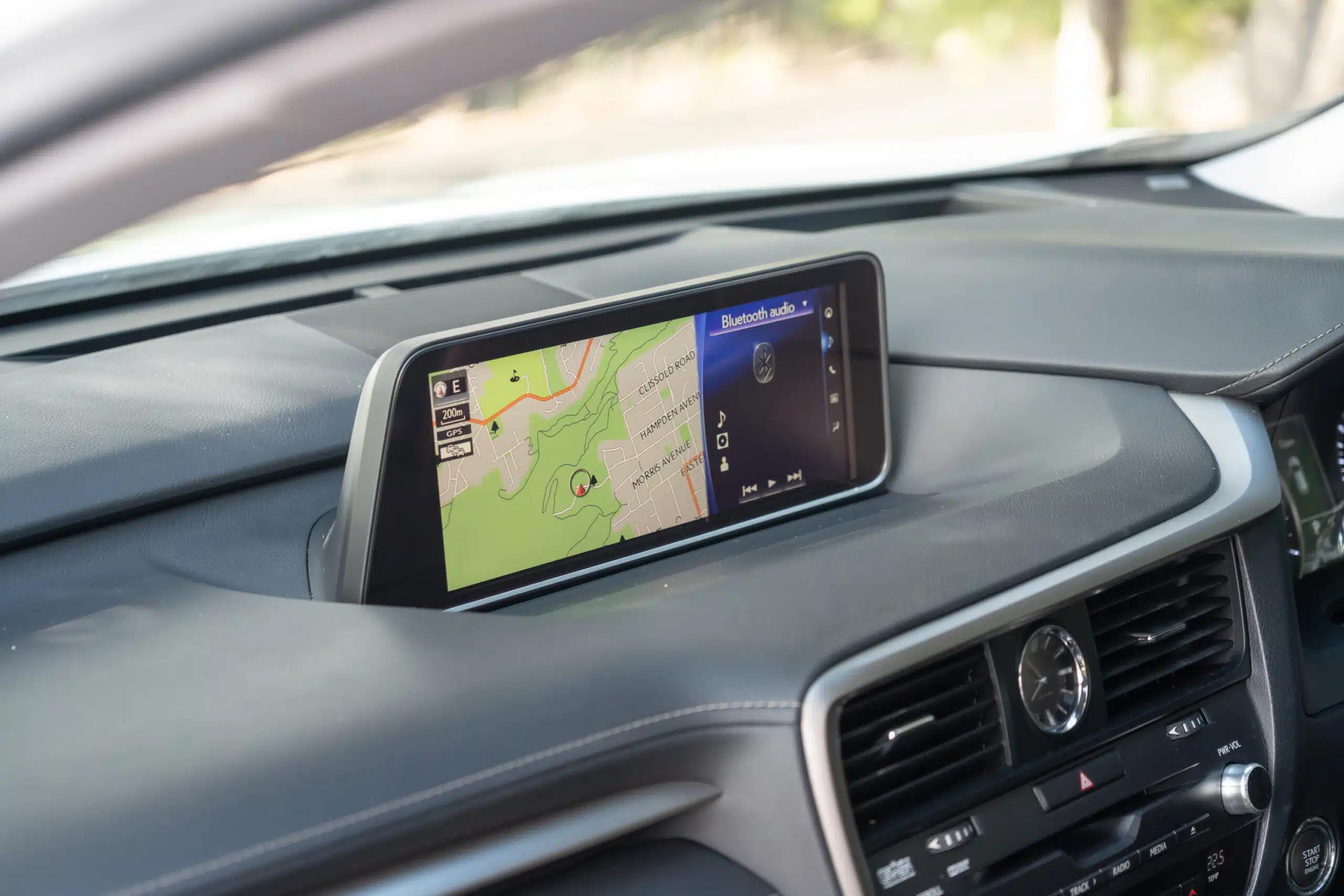
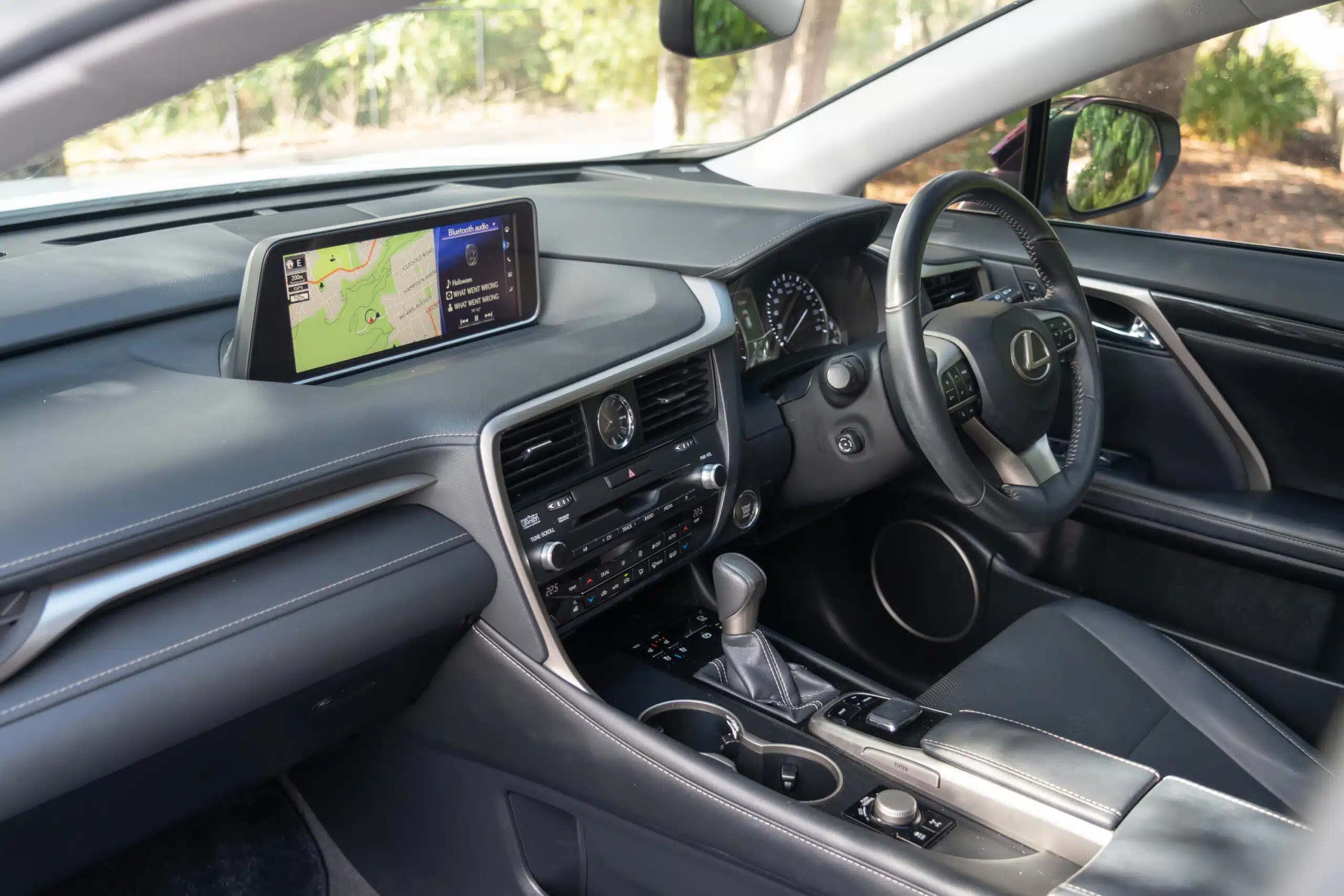
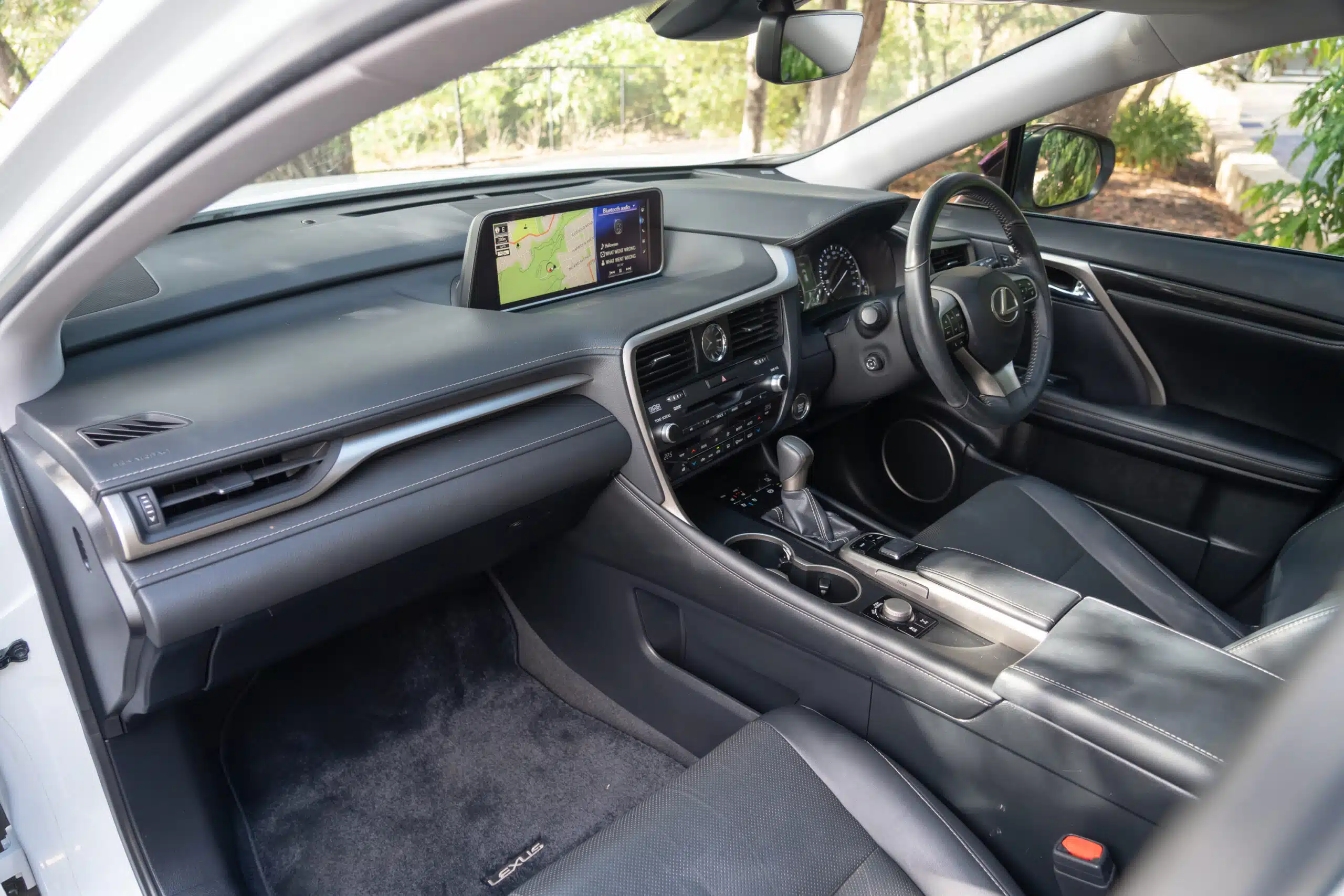
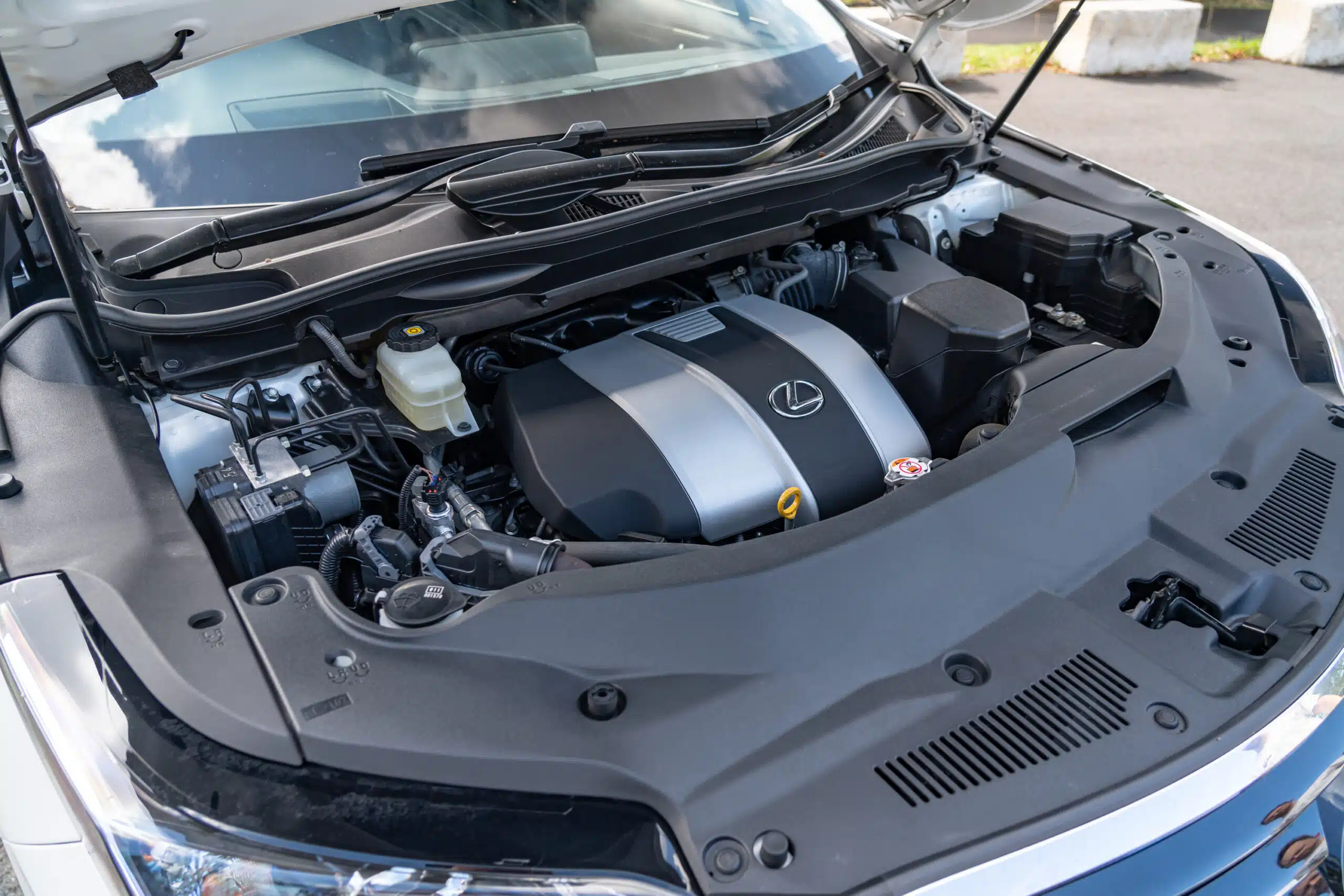

















Exterior Issues:
Check all of the powered exterior accessories work without issue – items such as the power folding side mirrors, LED front headlights, rear taillights, and the external parking sensors are some areas to look into, but from our research, they rarely experience issues, if any at all.
Pre-update RXs had somewhat average headlights with older-gen bulbs, but they were improved significantly when the post-update introduced LED headlights with clever ‘blade-scan’ technology.
If you’re targeting one of the ‘F Sport’ models, check that the trim-exclusive body parts, like the sportier-profile front bumpers, side skirts, and lower-profile alloy wheels are holding up fine and aren’t too badly scratched.
The powered sunroof is relatively free of common issues affecting its standard operation. Though check the drainage channels have been cleared regularly and prevent debris from collecting, which can lead to water ingress problems.
The remote start function equipped on some RXs can be a bit fussy to operate – some owners say it takes experimenting with positions towards the car or standing a certain distance/manner to hold the remote keyfob to get the car’s receiver to detect it.
The powered rear tailgate can be a source of frustration, which is set up to open by simply waving your foot underneath. It sounds smart and convenient in Lexus’s marketing, but in reality, it can be near impossible to detect your presence and open the tailgate; plus, being powered by electricity means it could suffer issues opening/closing as well as its regular locking functions.
Keeping to the rear tailgate, check the condition of the struts – any difficulty opening or holding upright point to signs that they require replacement, and prices for OEM units from Lexus can start from $4,000! Though from speaking with Lexus technicians, these items rarely fail.
Interior Issues:
As a Lexus product, you should expect the RX’s interior to be built to a high standard, and it still applies even on the oldest examples. All models have a well-constructed cabin that feels it can handle use for many years, with buttons/functions organised cleanly and requiring a minimal time to figure out how to use everything.
Adding to this, they rarely experience any major electronic gremlins. The only common complaint we found is that the stereo amplifiers can get a bit glitchy, but little to nothing else. Compare that to Mercedes-Benz, BMW, or Audi SUVs, which have a record of experiencing far more electrical issues even just within a few months of ownership.
Plus, even on the entry-level models, these come loaded with a lot of standard equipment and safety tech – many of which are only available as optional extras in the Lexus RX’s European rivals.
While these interiors
Exterior Issues:
Check all of the powered exterior accessories work without issue – items such as the power folding side mirrors, LED front headlights, rear taillights, and the external parking sensors are some areas to look into, but from our research, they rarely experience issues, if any at all.
Pre-update RXs had somewhat average headlights with older-gen bulbs, but they were improved significantly when the post-update introduced LED headlights with clever ‘blade-scan’ technology.
If you’re targeting one of the ‘F Sport’ models, check that the trim-exclusive body parts, like the sportier-profile front bumpers, side skirts, and lower-profile alloy wheels are holding up fine and aren’t too badly scratched.
The powered sunroof is relatively free of common issues affecting its standard operation. Though check the drainage channels have been cleared regularly and prevent debris from collecting, which can lead to water ingress problems.
The remote start function equipped on some RXs can be a bit fussy to operate – some owners say it takes experimenting with positions towards the car or standing a certain distance/manner to hold the remote keyfob to get the car’s receiver to detect it.
The powered rear tailgate can be a source of frustration, which is set up to open by simply waving your foot underneath. It sounds smart and convenient in Lexus’s marketing, but in reality, it can be near impossible to detect your presence and open the tailgate; plus, being powered by electricity means it could suffer issues opening/closing as well as its regular locking functions.
Keeping to the rear tailgate, check the condition of the struts – any difficulty opening or holding upright point to signs that they require replacement, and prices for OEM units from Lexus can start from $4,000! Though from speaking with Lexus technicians, these items rarely fail.
Interior Issues:
As a Lexus product, you should expect the RX’s interior to be built to a high standard, and it still applies even on the oldest examples. All models have a well-constructed cabin that feels it can handle use for many years, with buttons/functions organised cleanly and requiring a minimal time to figure out how to use everything.
Adding to this, they rarely experience any major electronic gremlins. The only common complaint we found is that the stereo amplifiers can get a bit glitchy, but little to nothing else. Compare that to Mercedes-Benz, BMW, or Audi SUVs, which have a record of experiencing far more electrical issues even just within a few months of ownership.
Plus, even on the entry-level models, these come loaded with a lot of standard equipment and safety tech – many of which are only available as optional extras in the Lexus RX’s European rivals.
While these interiors are among the most premium and highest-quality in the segment, they can still experience a few issues.
The leather seats and interior materials on pre-update models tend to be more susceptible to wear, such as the outer seat bolsters and interior trim. In post-update models, Lexus improved the build quality of the leather and cabin materials that had more premium feel and were well-constructed.
Models with gloss piano black trim are easier to scratch and wear down, while the wood/satin finishes are favored among owners when it comes to overall build quality. Special mention goes to the Sports Luxury models that feature laser-cut metal/wood trim that is polished by Yamaha’s piano division.
Extremely hot climates, like in Australia, affected some early, pre-facelift RXs with dashboard surface/trim cracking issues, in addition to minor rattling or miscellaneous interior noises from the fit and finish, but owners report that these were quickly resolved under warranty.
The older, pre-update infotainment systems are one of the most complained-about features of the RX. Along with a small screen and user interface that feels a generation behind, these were controlled by the mouse-style control pad as part of the early version of the Lexus ‘Remote Touch Interface’ that many found frustrating to use – especially when attempting to pinpoint the cursor icon while driving.
Thankfully, this system was improved as part of the post-update refresh, which increased the screen size (12.3 inches from 8 inches), added touchscreen controls (though it is somewhat difficult to access from an ergonomics perspective that requires leaning towards the dashboard), and featured a laptop-style touchpad that was not perfect, but slightly better in terms of useability.
Post-update systems also added support for Apple CarPlay and Android Auto, though it missed out on wireless CarPlay connectivity. There are aftermarket methods to add this function, as well as retrofit Apple CarPlay/Android Auto for pre-update systems and upgrade the quality of the reversing/around view cameras – owners forums will be your best friend to research this.
Both versions of the infotainment system can experience common issues seen in other current-era systems: Bluetooth/phone connectivity dropping out, unresponsive menus, or devices not connecting at all.
If you’re eyeing one with the upgraded Mark Levinson sound system, owners we spoke to mention they still prove to have impressive sound quality to this day.
Mechanical issues:
Engines:
2.0L turbocharged four-cylinder (8AR-FTS):
This is a fairly new engine built by Toyota, and so far, it has proven to be quite reliable. However, being more complex in design compared to older Toyota/Lexus group engines, these newer units will likely not be as robust in the long run if maintenance is completely neglected, so for this engine, regular servicing is crucial for longevity.
A very small percentage of early 2016-2017 models experienced an exhaust valve guide wear issue, but the fix should ideally have been covered under Lexus’s warranty.
Another common issue is wear on the exhaust valve guide, primarily affecting those that have over 120,000 km of mileage.
Maintenance aside, many owners complain that this engine can feel quite lethargic, primarily due to its rather lackluster throttle response. Kickdown of the throttle when pulling from standstill or to catch up with traffic flow, and it can struggle to get up to speed unless you really floor the accelerator.
Owners recommend exploring tunes to change the throttle settings on early models, while reporting that in post-update models, Lexus seemed to have adjusted the throttle behaviour to be more responsive.
It’s worth also mentioning that while this is the smallest engine available in the RX, this doesn’t translate into better fuel economy. Owners report averaging 12-15L per 100 kms, but can report 11-12L per 100 kms with the larger petrol V6, most likely because the bigger engines don’t need to work as hard to move a heavy SUV like the RX.
3.5L V6/V6 Hybrid (2GR-FKS/2GR-FXS)
The 2GR-series of V6 engines has been around for a long time, and carries a solid reputation as one of the Toyota group’s most reliable petrol engines.
High kilometre examples (120,000 km above) can experience water pump leaks, but it’s a very straightforward fix, and it’s recommended to replace the thermostat at the same time.
Other issues to potentially look out for, but not common, are the high-pressure fuel pump, as well as the purge valve (look out for a lean fault code).
The hybrid V6 powertrain is also considered very reliable. On top of regular maintenance, ensure the cooling fan vent filter is cleaned during each service. This helps regulate the hybrid system’s batteries’ temperature – and if they are looked after, reduces the potential for an expensive hybrid battery replacement.
Also, no surprise that the hybrid V6 excels if buyers prioritise gas efficiency – owners report these can deliver between 6-8 litres per 100 kms.
Transmission:
The petrol engines come with a six or eight-speed torque converter automatic transmission, and minus some complaints from owners that they can get lost ‘hunting’ for the right gear, with regular servicing, it will continue to deliver a trouble-free, smooth driving experience.
The hybrid models are paired to an eCVT (Continuously Variable Transmission) that, despite concerns over their integrity (i.e. comparing them to infamous Jatco CVTs used by other Japanese cars), the ones used by Toyota and Lexus products can prove to be more robust than you might think.
As with their torque-converter counterparts, regular servicing and care guarantee maximum longevity of this transmission.
Exterior Issues:
Check all of the powered exterior accessories work without issue – items such as the power folding side mirrors, LED front headlights, rear taillights, and the external parking sensors are some areas to look into, but from our research, they rarely experience issues, if any at all.
Pre-update RXs had somewhat average headlights with older-gen bulbs, but they were improved significantly when the post-update introduced LED headlights with clever ‘blade-scan’ technology.
If you’re targeting one of the ‘F Sport’ models, check that the trim-exclusive body parts, like the sportier-profile front bumpers, side skirts, and lower-profile alloy wheels are holding up fine and aren’t too badly scratched.
The powered sunroof is relatively free of common issues affecting its standard operation. Though check the drainage channels have been cleared regularly and prevent debris from collecting, which can lead to water ingress problems.
The remote start function equipped on some RXs can be a bit fussy to operate – some owners say it takes experimenting with positions towards the car or standing a certain distance/manner to hold the remote keyfob to get the car’s receiver to detect it.
The powered rear tailgate can be a source of frustration, which is set up to open by simply waving your foot underneath. It sounds smart and convenient in Lexus’s marketing, but in reality, it can be near impossible to detect your presence and open the tailgate; plus, being powered by electricity means it could suffer issues opening/closing as well as its regular locking functions.
Keeping to the rear tailgate, check the condition of the struts – any difficulty opening or holding upright point to signs that they require replacement, and prices for OEM units from Lexus can start from $4,000! Though from speaking with Lexus technicians, these items rarely fail.
Interior Issues:
As a Lexus product, you should expect the RX’s interior to be built to a high standard, and it still applies even on the oldest examples. All models have a well-constructed cabin that feels it can handle use for many years, with buttons/functions organised cleanly and requiring a minimal time to figure out how to use everything.
Adding to this, they rarely experience any major electronic gremlins. The only common complaint we found is that the stereo amplifiers can get a bit glitchy, but little to nothing else. Compare that to Mercedes-Benz, BMW, or Audi SUVs, which have a record of experiencing far more electrical issues even just within a few months of ownership.
Plus, even on the entry-level models, these come loaded with a lot of standard equipment and safety tech – many of which are only available as optional extras in the Lexus RX’s European rivals.
While these interiors are among the most premium and highest-quality in the segment, they can still experience a few issues.
The leather seats and interior materials on pre-update models tend to be more susceptible to wear, such as the outer seat bolsters and interior trim. In post-update models, Lexus improved the build quality of the leather and cabin materials that had more premium feel and were well-constructed.
Models with gloss piano black trim are easier to scratch and wear down, while the wood/satin finishes are favored among owners when it comes to overall build quality. Special mention goes to the Sports Luxury models that feature laser-cut metal/wood trim that is polished by Yamaha’s piano division.
Extremely hot climates, like in Australia, affected some early, pre-facelift RXs with dashboard surface/trim cracking issues, in addition to minor rattling or miscellaneous interior noises from the fit and finish, but owners report that these were quickly resolved under warranty.
The older, pre-update infotainment systems are one of the most complained-about features of the RX. Along with a small screen and user interface that feels a generation behind, these were controlled by the mouse-style control pad as part of the early version of the Lexus ‘Remote Touch Interface’ that many found frustrating to use – especially when attempting to pinpoint the cursor icon while driving.
Thankfully, this system was improved as part of the post-update refresh, which increased the screen size (12.3 inches from 8 inches), added touchscreen controls (though it is somewhat difficult to access from an ergonomics perspective that requires leaning towards the dashboard), and featured a laptop-style touchpad that was not perfect, but slightly better in terms of useability.
Post-update systems also added support for Apple CarPlay and Android Auto, though it missed out on wireless CarPlay connectivity. There are aftermarket methods to add this function, as well as retrofit Apple CarPlay/Android Auto for pre-update systems and upgrade the quality of the reversing/around view cameras – owners forums will be your best friend to research this.
Both versions of the infotainment system can experience common issues seen in other current-era systems: Bluetooth/phone connectivity dropping out, unresponsive menus, or devices not connecting at all.
If you’re eyeing one with the upgraded Mark Levinson sound system, owners we spoke to mention they still prove to have impressive sound quality to this day.
Mechanical issues:
Engines:
2.0L turbocharged four-cylinder (8AR-FTS):
This is a fairly new engine built by Toyota, and so far, it has proven to be quite reliable. However, being more complex in design compared to older Toyota/Lexus group engines, these newer units will likely not be as robust in the long run if maintenance is completely neglected, so for this engine, regular servicing is crucial for longevity.
A very small percentage of early 2016-2017 models experienced an exhaust valve guide wear issue, but the fix should ideally have been covered under Lexus’s warranty.
Another common issue is wear on the exhaust valve guide, primarily affecting those that have over 120,000 km of mileage.
Maintenance aside, many owners complain that this engine can feel quite lethargic, primarily due to its rather lackluster throttle response. Kickdown of the throttle when pulling from standstill or to catch up with traffic flow, and it can struggle to get up to speed unless you really floor the accelerator.
Owners recommend exploring tunes to change the throttle settings on early models, while reporting that in post-update models, Lexus seemed to have adjusted the throttle behaviour to be more responsive.
It’s worth also mentioning that while this is the smallest engine available in the RX, this doesn’t translate into better fuel economy. Owners report averaging 12-15L per 100 kms, but can report 11-12L per 100 kms with the larger petrol V6, most likely because the bigger engines don’t need to work as hard to move a heavy SUV like the RX.
3.5L V6/V6 Hybrid (2GR-FKS/2GR-FXS)
The 2GR-series of V6 engines has been around for a long time, and carries a solid reputation as one of the Toyota group’s most reliable petrol engines.
High kilometre examples (120,000 km above) can experience water pump leaks, but it’s a very straightforward fix, and it’s recommended to replace the thermostat at the same time.
Other issues to potentially look out for, but not common, are the high-pressure fuel pump, as well as the purge valve (look out for a lean fault code).
The hybrid V6 powertrain is also considered very reliable. On top of regular maintenance, ensure the cooling fan vent filter is cleaned during each service. This helps regulate the hybrid system’s batteries’ temperature – and if they are looked after, reduces the potential for an expensive hybrid battery replacement.
Also, no surprise that the hybrid V6 excels if buyers prioritise gas efficiency – owners report these can deliver between 6-8 litres per 100 kms.
Transmission:
The petrol engines come with a six or eight-speed torque converter automatic transmission, and minus some complaints from owners that they can get lost ‘hunting’ for the right gear, with regular servicing, it will continue to deliver a trouble-free, smooth driving experience.
The hybrid models are paired to an eCVT (Continuously Variable Transmission) that, despite concerns over their integrity (i.e. comparing them to infamous Jatco CVTs used by other Japanese cars), the ones used by Toyota and Lexus products can prove to be more robust than you might think.
As with their torque-converter counterparts, regular servicing and care guarantee maximum longevity of this transmission.
The cheapest examples of AL20-gen Lexus RXs start from $25,000, and can top out at $105,000 for the best possible final year, top-of-the-line models.
If you know the Lexus brand, you know that these are some of the most bulletproof cars made, and so little goes wrong with them. There’s a reason why these cars were sold under the tagline: “the relentless pursuit of perfection.”
Compared to European equivalents like the BMW X5, Mercedes-Benz GLE, and Audi Q5, you will be hard-pressed to find the same extent of issues or complaints from owners when it comes to the Lexus RX. You’re more likely to find the opposite – owners who constantly praise how much they love their Lexuses.
After all, Lexus is consistently among the top rankings of multiple owners’ satisfaction surveys and received countless owner satisfaction awards/distinctions around the world – year after year. Plus, they have some of the highest owner loyalty and customer retention rates across the automotive industry.
Of course, do your due diligence as with any secondhand car – get a pre-purchase inspection done to ensure it’s in good health, and the RX, like any Lexus product on the used market, will prove to be one of the best purchases you can make.
The cheapest examples of AL20-gen Lexus RXs start from $25,000, and can top out at $105,000 for the best possible final year, top-of-the-line models.
If you know the Lexus brand, you know that these are some of the most bulletproof cars made, and so little goes wrong with them. There’s a reason why these cars were sold under the tagline: “the relentless pursuit of perfection.”
Compared to European equivalents like the BMW X5, Mercedes-Benz GLE, and Audi Q5, you will be hard-pressed to find the same extent of issues or complaints from owners when it comes to the Lexus RX. You’re more likely to find the opposite – owners who constantly praise how much they love their Lexuses.
After all, Lexus is consistently among the top rankings of multiple owners’ satisfaction surveys and received countless owner satisfaction awards/distinctions around the world – year after year. Plus, they have some of the highest owner loyalty and customer retention rates across the automotive industry.
Of course, do your due diligence as with any secondhand car – get a pre-purchase inspection done to ensure it’s in good health, and the RX, like any Lexus product on the used market, will prove to be one of the best purchases you can make.
The cheapest examples of AL20-gen Lexus RXs start from $25,000, and can top out at $105,000 for the best possible final year, top-of-the-line models.
If you know the Lexus brand, you know that these are some of the most bulletproof cars made, and so little goes wrong with them. There’s a reason why these cars were sold under the tagline: “the relentless pursuit of perfection.”
Compared to European equivalents like the BMW X5, Mercedes-Benz GLE, and Audi Q5, you will be hard-pressed to find the same extent of issues or complaints from owners when it comes to the Lexus RX. You’re more likely to find the opposite – owners who constantly praise how much they love their Lexuses.
After all, Lexus is consistently among the top rankings of multiple owners’ satisfaction surveys and received countless owner satisfaction awards/distinctions around the world – year after year. Plus, they have some of the highest owner loyalty and customer retention rates across the automotive industry.
Of course, do your due diligence as with any secondhand car – get a pre-purchase inspection done to ensure it’s in good health, and the RX, like any Lexus product on the used market, will prove to be one of the best purchases you can make.
Have ultimate peace of mind when buying a used car by purchasing an official PPSR report.
You are the best, the content in your videos is so helpful, delivered in a great way. Please keep going as for sure you are unique in every way. All the best from Guatemala
L. G. - YouTube
You guys have truly found something wonderful… Loved this channel ever since from the beginning… Will support you guys as long as you guys keep making these wonderful car reviews…
Calvin - YouTube
This is probably the best channel I have ever seen when reviewing vehicles. New or old. The honesty is so appreciated. I’ve been a mechanic for 20 years and I find it very informative when looking for a vehicle for my daughter. Keep up the awesome work.
Jason T. - YouTube
© 2025 ReDriven All Rights Reserved